South African House Plans 2 South African House Plans 2








Contents Preface Due to the success of the first issue of
South African House Plans, it was decided to publish a second book with a new range of house plans by the inhouseplans.com architects. We have always maintained that only a few people in South Africa can afford the services of a suitably qualified architect to design a once-off dream house for their specific spatial and aesthetic requirements. Uninformed people are often amazed at the cost of employing an architect. The fact is that it is a time-consuming, complicated process, performed by a highly trained professional, often with many years of experience. According to
The Phaidon Atlas of 21st Century World Architecture, there were only 8.9 registered architects per 100 000 people in South Africa in 2008. In comparison, a country such as Australia has 57.14 architects per 100 000 people, Argentina 108.4, Brazil 43.8, Egypt 26.7 and Singapore 34.0.
Due to a growing South African economy, as well as an increasing demand for housing, especially in light of the huge and positive impact of Black Economic Empowerment, there are simply not enough architects in South Africa to meet the demand in the residential market. In 2002, the company inhouseplans (Pty) Ltd launched the first e-commerce website in South Africa to sell building plans and it is based at www.inhouseplans.com. The website displays standard house plans in different floor areas and styles. The building plans of a house can be ordered at a huge discount and delivered by courier within five days. Various architects, all of whom are registered with the South African Council for the Architectural Profession (SACAP), have designed the plans, which comply with National Building Regulations and are ready for approval at a local authority. Since 1 July 2006, all persons practising architecture or submitting building plans to local authorities within South Africa are obliged to register with the SACAP and certify the plans.
The inhouseplans.com philosophy is that there are a large number of people who want to build a house, but do not have the resources to employ an architect. They often end up with a poorly designed house by someone who is not properly qualified. The result is a bad investment, which has a negative impact on their quality of life due to poor planning. The inhouseplans.com website has proved to be tremendously popular. The concept, which has been common practice for many years in the USA, has quickly caught on in South Africa. South African House Plans 2 includes a collection of traditional styles and themed styles, as well as contemporary architecture. South African House Plans 2 includes a collection of traditional styles and themed styles, as well as contemporary architecture.
For ease of reference, the plans in this book have been arranged according to size, beginning with the smallest house plan. We trust that this book will be widely used by people planning to build a house or who just wish to browse for ideas. The full set of building plans for the majority of designs in this book may be ordered from inhouseplans.com. Please find an order form and full instructions on the last page of the book. Alternatively, visit www.inhouseplans.com to order plans online. INTRODUCTION The process of building your own dream house should be one of the most exciting times of your life, but more often than not it turns out to be the biggest nightmare.
On the website, inhouseplans.com, we specialise in being your online architect and your online building consultant. You will find all you need to build your dream house. This book provides the general guidelines of the process to be followed when planning to build a new house and the majority of the plans contained in it are available on the inhouseplans.com website. Homeownership When the need arises for a new roof over your and your familys heads, you need to consider three options renting, buying, or building a house and each option has its own merits and drawbacks. When renting accommodation, it may be true that you dont need much of a capital outlay, and that you can relocate quite easily, but it also means that you dont own a place of your own. Every rand you pay in rent simply goes into somebody elses pocket, and your dream of owning your own place keeps slipping further and further away.
Any escalation in property prices is to the benefit of the property owner, while you as the tenant simply have to pay a higher rent. On the other hand, whether you buy an existing house or build a house from scratch, some initial capital of your own will be required, but all price escalations in the housing market will be for your own benefit. For many years in South Africa it has been cheaper to buy an existing house than to build a new one, especially if you have been fortunate enough to find the house of your dreams with an established garden, paving and a pool, located in the area in which you want to live. However, you are very fortunate if you find a place that complies with all your requirements! The only sure way to get everything you want or need from a home is to find an appropriate stand and to build it. Site selection and purchase Before buying a stand on which to build your own house (or, for that matter, before buying an existing house), there are many aspects you should consider carefully. Remember, a house will always be a major investment by far the single biggest investment many people will ever make.
Take care when considering that, in addition to the physical aspects of a stand such as trees, geological issues and water, landownership also includes legal rights. These include the right to sell, lease, build, mortgage, use, enjoy, occupy, and so on. These rights are tied to the land and therefore benefit successive owners. Always be sure to consider the following aspects and make your own decision on the importance of each aspect: Ascertain what future development is being considered in the area, such as roads and industrial development. Determine the location of shopping areas, schools, churches, bus routes, etc. Check the extent of pedestrian traffic and heavy vehicle flow in the vicinity.
Investigate the condition of the soil be careful of dolomite and clay conditions and the extent and condition of the topsoil. Find out from the local authority about possible restrictions in the towns Conditions of Establishment, the stands title deed or the local authoritys Town Planning Scheme (see the section on Statutory information on ). Also make sure that the township has been proclaimed and serviced by the developer. Is there a pleasant view? Do you need a view? Where is north and how will it influence the living conditions on the stand? If the stand is situated on a slope, what becomes of the storm water from higher lying properties? What taxes are payable? What municipal services are available, and what are the costs? What is the size? Can subdivision or a second dwelling or granny flat be accommodated? Building plans One of the basic statutory requirements of the National Building Regulations (discussed under Statutory information on ) is that no-one may start building a house without having had the building plans of the house approved beforehand by the relevant local authority. This requirement is applicable to ALL buildings erected within the boundaries of jurisdiction of all local authorities in South Africa. Every prospective house owner MUST therefore submit a full set of building plans for approval to the local authority before building may commence.

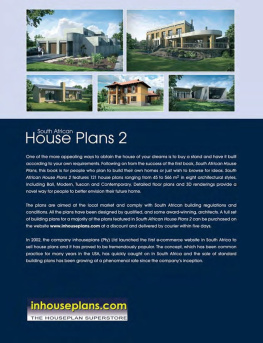
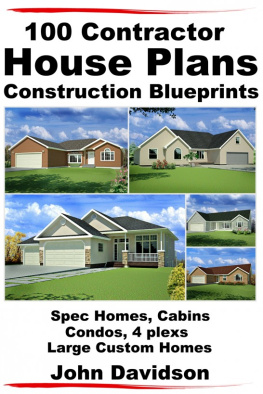


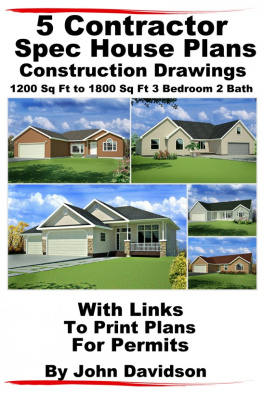
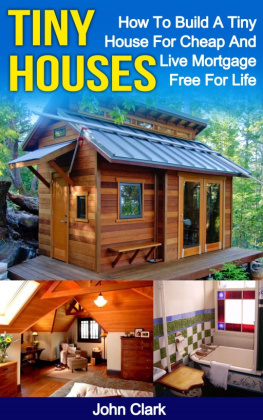
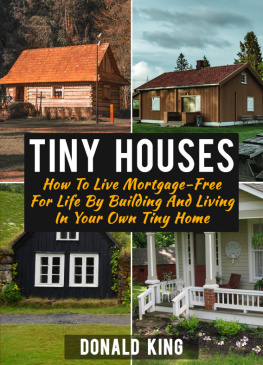
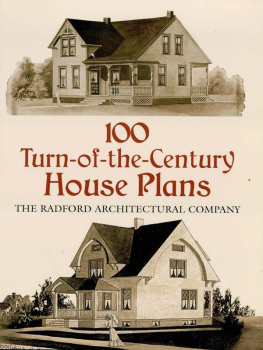

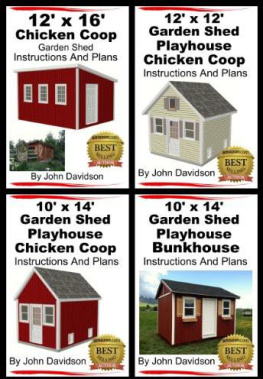
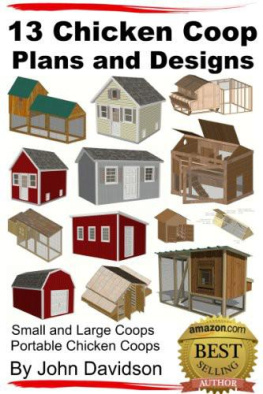








 Contents Preface Due to the success of the first issue of South African House Plans, it was decided to publish a second book with a new range of house plans by the inhouseplans.com architects. We have always maintained that only a few people in South Africa can afford the services of a suitably qualified architect to design a once-off dream house for their specific spatial and aesthetic requirements. Uninformed people are often amazed at the cost of employing an architect. The fact is that it is a time-consuming, complicated process, performed by a highly trained professional, often with many years of experience. According to The Phaidon Atlas of 21st Century World Architecture, there were only 8.9 registered architects per 100 000 people in South Africa in 2008. In comparison, a country such as Australia has 57.14 architects per 100 000 people, Argentina 108.4, Brazil 43.8, Egypt 26.7 and Singapore 34.0.
Contents Preface Due to the success of the first issue of South African House Plans, it was decided to publish a second book with a new range of house plans by the inhouseplans.com architects. We have always maintained that only a few people in South Africa can afford the services of a suitably qualified architect to design a once-off dream house for their specific spatial and aesthetic requirements. Uninformed people are often amazed at the cost of employing an architect. The fact is that it is a time-consuming, complicated process, performed by a highly trained professional, often with many years of experience. According to The Phaidon Atlas of 21st Century World Architecture, there were only 8.9 registered architects per 100 000 people in South Africa in 2008. In comparison, a country such as Australia has 57.14 architects per 100 000 people, Argentina 108.4, Brazil 43.8, Egypt 26.7 and Singapore 34.0.